Introduction

The new TVS Apache RTR 310 is not just a stripped-down RR 310. It boasts enough changes to have its distinctive personality. Besides all the mechanical changes, if you look at the number of features it has, it can clearly put much bigger bikes to shame in terms of technology. However, the competition has stiffened up, not just in terms of tech but also the overall riding experience. The new KTM 250 Duke, for instance, has now evolved to be a better offering in every aspect. In that case, is the TVS Apache RTR 310 fun, capable, and practical enough to match or outdo its contenders? We had an elaborate stint with the bike to answer that.
Styling and Quality

The RTR 310 stays true to the Apache heritage with an aggressive streetfighter stance. The robotic, low-slung front end, muscular fuel tank with sharp extensions, exposed frame, and pointed tail section catch the onlooker’s attention everywhere, especially this Fury Yellow colour scheme. However, some people might find its styling a bit confusing and disproportionate. The front fascia looks bulky and imposing, which is a contrast to the rest of the minimalistic bodywork sporting svelte and sleek lines. Nonetheless, the overall stance is radical and eye-catching.
As for the overall quality levels and fit and finish, no complaints on that front. Everything has been sturdily put together while the quality of plastic panels and paint finish exude a premium feel.
Ergonomics and Comfort

The Apache RTR 310 seats you in a fairly comfortable riding position. At 800mm, the seat height is accessible, even for shorter riders, and hopping on is easy. You sit in a decently upright riding position with a slight crouch to reach the handlebar. The footpegs are a bit rear-set, and the seat feels adequately cushy. Plus, the fuel tank has recesses deep enough to lock your knees comfortably. However, the small hump on the front of the pillion seat stabs the rider into the tailbone every time he/she tries to shift behind. It also restricts the available space on the seat. So, if you’re a large-sized individual, the seat space might be a minor issue on an otherwise comfortable bike.

The ride quality, meanwhile, is almost plush. Minor undulations like road joints, ruts, and potholes are nearly flattened out. It’s only when you go through a deep pothole that you sense a slight jolt to your back. And at higher speeds, if the road is even slightly bumpy, the bike keeps bouncing gently, but not to discomforting levels.
For people who want to tailor the ride to their liking, TVS also offers an optional fully-adjustable suspension setup as a part of its Dynamic Kit which costs Rs. 18,000.
Performance and Handling

Powering the RTR 310 is the same 312cc, single-cylinder, liquid-cooled motor that does duty on the Apache RR310. However, TVS has made minor changes to the fuel map, intake, and exhaust for the RTR, besides altering the gear ratios.
As a result, you get an engine with a very strong mid-range grunt, making this bike an absolute hoot to ride in the city. There’s a vigorous pull right from 4,000rpm almost till its redline. But the real punch lies between 5,000rpm and 7,000rpm where the bike feels profoundly quick. You’ll find yourself overtaking most of the vehicles in the city effortlessly. It’s also tractable enough to easily potter along at 45-50kmph in the sixth gear. Plus, the heat management is efficient, and even in dense traffic, I didn’t feel any hot air being dissipated on my legs.

Adding to the experience is a light clutch and a slick-shifting gearbox. Now, if you are too lazy to use the clutch, the quickshifter functions decently well for the most part. Although it’s not as seamless as the bigger bikes, and once you get used to the slight jerk during upshifts, the system is fun to operate. The story is similar on the highway as well. Even at 100-110kmph, when the engine is sitting close to 6,000rpm, you have enough go to pull off overtakes without the need to downshift.

On the flip side, the engine can do better in some areas. While the throttle response feels accurate when accelerating, the deceleration happens with an abrupt jerk. Even if you learn to live with that, the vibrations act as a major downer for this engine. You start feeling a prominent buzz from 5,000rpm and it keeps increasing as the revs climb. Vibrations are noticeable even at 90kmph and they get more intense at 100kmph. That said, the vibes are not absolutely frustrating, at least not for a few minutes. However, I would think twice before taking it out on a tour that requires me to ride it the entire day.

On the handling front, this is a quintessential Apache. It feels incredibly agile, light on its feet, and playful, which makes slicing your way through traffic a delightful affair. The sharp handling dynamics also make it great around corners where the bike is completely at home with the chassis feeling fairly communicative and responsive. Not to forget, the grippy Michelin Road 5 tyres only add to the confidence-inspiring handling of the bike.
The RTR 310 also offers good braking performance. The bite from the front brake is quite strong. Although it feels slightly inconsistent under hard braking, the stopping power is never inadequate. Interestingly, you can also adjust the reach to the brake and clutch levers in four steps.
Features and Technology

On the feature front, the Apache RTR 310 is a proper tech fest. Firstly, it gets a full-colour, Bluetooth-enabled TFT screen with turn-by-turn navigation and race telemetry. It also offers five different theme options dedicated to each riding mode; the one we had boasted five of them – Rain, Urban, Sport, Track, and Supermoto. In the latter three modes, you have access to all the power and torque it has on offer, which stands at 35.1bhp and 28.7Nm. However, in the Rain and Urban mode, the performance is dialled down to 26.7bhp and 27.3Nm. Out on the road, the difference in performance isn’t huge but noticeable nonetheless.

Other features available as standard on the Fury Yellow variant include an assist and slipper clutch, quickshifter, traction control, cruise control, headlamp brightness adjustment, and glide-through technology. I particularly enjoyed using cruise control which works accurately and makes riding on the highway a sublime affair.
If you opt for the optional Dynamic Kit, which costs Rs. 18,000, you get a tyre pressure monitoring system and brass coated chain, besides fully adjustable suspension. Then there’s the Dynamic Pro kit, which is worth Rs. 22,000, and brings in a six-axis IMU, thereby providing lean sensitivity to traction control, ABS, and cruise control. Moreover, the first-in-class climate control seat is also a part of this kit.
Fuel Efficiency
In our mileage test, which is done in moderate traffic and by riding the bike conservatively, the Apache RTR 310 returned 28.8kmpl which is acceptable for a bike of this class. Considering its 11-litre fuel tank, the full tank range should roughly be close to 316km.
Should You Buy It?

If you’re in the market for a tech-intensive, fun-to-ride yet practical naked motorcycle under Rs. 4 lakh, the Apache RTR 310 is worthy of your consideration. As of now, it’s also fresh and not seen on the road in big numbers which makes it a distinctive proposition, suitable for someone who wants something uncommon.

The RTR 310 handles city duties with aplomb. The punchy mid-range, playful handling dynamics, commanding seating position, and light controls make it an involving city motorcycle. And when you hit the twisties, it takes them on with gusto, especially due to the grippy Michelin tyres. Whether it’s a good touring motorcycle is questionable, mainly due to the intense vibrations at higher speeds. Now, everyone’s tolerance for vibes might be different but whoever, at BikeWale, rode this bike at highway speeds found the buzz to be bothersome.
In a nutshell, the Apache RTR 310 is a phenomenal city bike and great for short weekend jaunts. However, if extensive touring is on your bucket list, you might want to look elsewhere.
Photography by Kapil Angane
Gallery
1/82
TVS Apache RTR 310 Pillion Footrest
Double Tap to Zoom

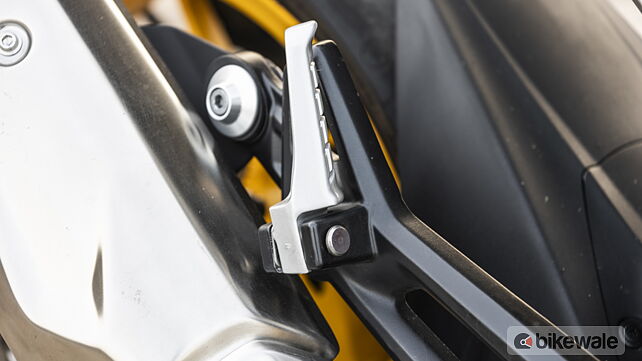














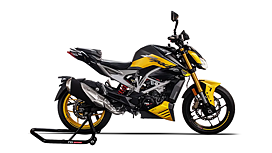


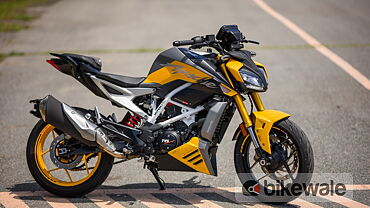
















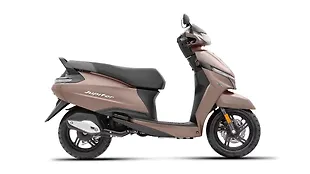
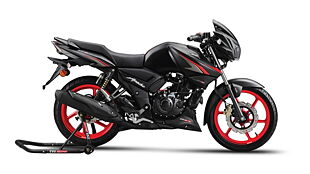





![KTM 390 Adventure X [2025] KTM 390 Adventure X [2025]](https://imgd.aeplcdn.com/272x153/n/cw/ec/190885/390-adventure-x-2025-right-side-view.jpeg?isig=0&q=80)